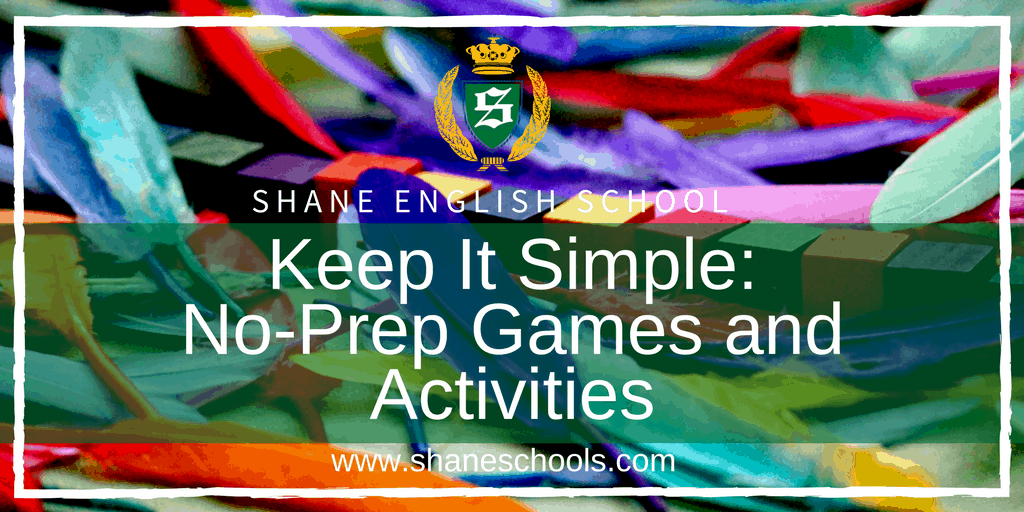It’s always a good idea to have a few extra class activities prepared, but it’s not always realistic. There are times when students finish planned activities too quickly and other times when you may unexpectedly take over for another teacher. But have no fear! We’ve got you covered with these three ‘no prep’ activities for your teaching emergencies.
Whether you’re running low on lesson planning time or are covering a class with no handover notes, there are bound to be times in your teaching career when you’re in need of a ‘no prep’ activity, or at least something where the only thing you need is a whiteboard and marker. It’s great to have a few of these games in your repertoire, not just for when you run out of planning time, but also to use as fillers when students finish your planned material too quickly. Take a look at our easy-to-run activities that won’t have you spending hours at the photocopier or cutting up bits of paper for a complicated game.
The Listing Game (Shopping Game)
Not even a whiteboard is required for this one unless you want to write up the target sentence to guide lower level students. The idea is simple – create a list, with each student adding one item to the list, to be recalled from memory. The usual target sentence is I went to the shops and I bought… Perhaps the first student will say a banana. So the next student will say a banana and a rabbit. The next student will say a banana, a rabbit and a mobile phone. The list continues until a student can no longer recall the list correctly. You can make it simpler by having each student name a word beginning with a letter of the alphabet in sequence, to make it easier to remember. Example: an apple, a brooch, a cat, a pan… The target sentence can be changed depending the on level of students and topics recently studied. Examples: The last time I went on holiday, into my suitcase I packed… For my next birthday, I’d like… I have a job in the local shop, and today I sold…
Clap / Stamp Game
This game can be applied to any language point, and all it requires is for your students to either clap their hands or stamp their feet. For example, you could practice CVC (consonant-vowel-consonant) words and ask students to clap/stamp depending on which medial vowel they hear. You could teach countable/uncountable nouns, verbs in different tenses… pretty much any topic can be worked into this game. Just explain to the students to listen and then either clap or stamp depending on what they hear. You can do it as a review, or make it into a game so that the last one to react is ‘out’. Higher-lever students could even be the game master and say the words.
Simon Says
A great game with younger kids, all you need is your imagination. Explain the rules of the game (TPR works well) just jump right in and start playing. If the students like it, let one of them be the teacher and lead the game. It’s also a great one to review imperatives. Most teachers are familiar with the game, but it’s easy enough to learn if not. The teacher will say something (usually an imperative) like “Simon Says touch your toes” or “Simon says clap your hands”, to which the students react by completing the action. If the teacher says the phrases without the ‘Simon Says’ at the beginning, for example, just “touch your toes”, then the students should do the action. A student is out if they do the action when they aren’t supposed to.
For more teaching tips, visit our teaching tips blog. Or for tips and tricks to share with students, check out our language learning tips.
About the Author
Celia Jenkins is a long-time ESL/EFL teacher and freelance writer.

We're hiring!
With schools around the world, Shane English School always has exciting new opportunities to offer.


